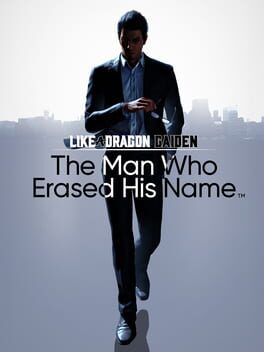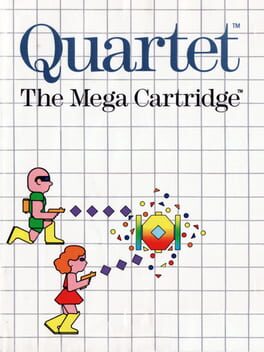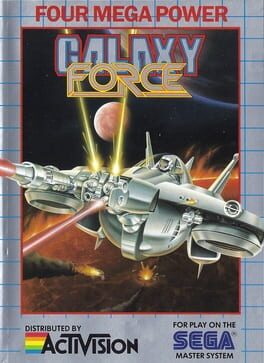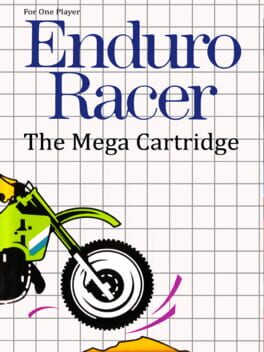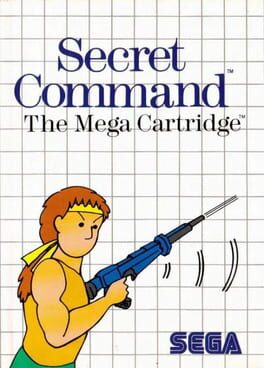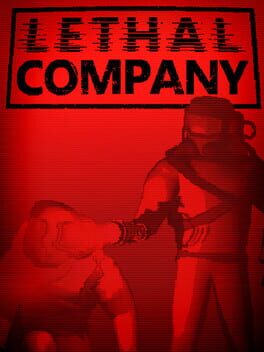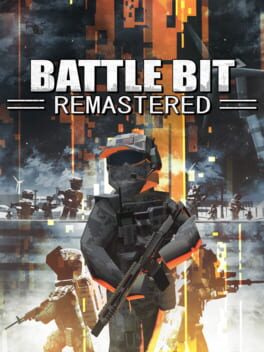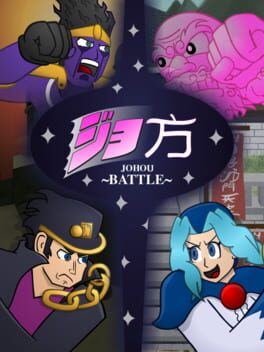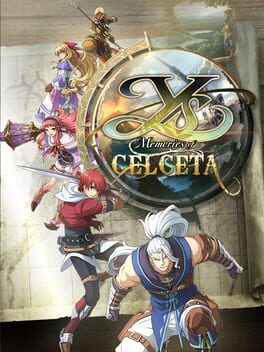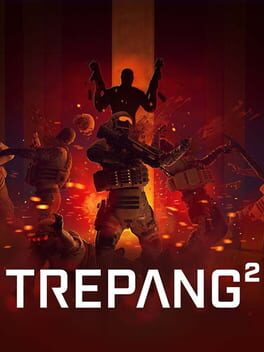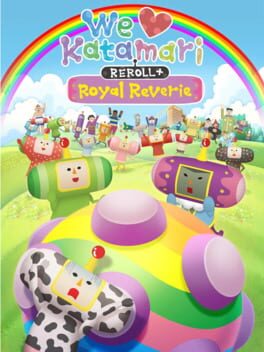VideoGameTim
BACKER
There are a number of long-running media series out there that inevitably have that entry that sets a new bar. The big blockbuster that is so earth-shattering, you have to wonder how the creators could possibly follow it up. Putting my own feelings of FFVII aside, no one could possibly deny that FFVIII had a herculean task to follow that up. The new shift in focus and mechanics featured in FFVIII would not be for everybody, but boy were they for me.
FF8 focuses on a group of teenage soldiers who are being raised and trained to become "SeeD"s, highly elite soldiers for their respective "Garden"s to go off and fight in whatever contracts their Garden chooses to take. They make use of Guardian Forces (GFs) which serve as their summons, and slowly over time learn more about the world around them. There are a lot of parallels here to another more recent game I care very dearly for, and fans of Xenoblade Chronicles 3 should probably be giving this game a go.
As you may have guessed, FF8 does lay out the anti-war sentiment as many of their games do, but here it serves as more of a backdrop for a much more personal message. More so than (most) other FF games, FF8 is highly centred around its main character. Squall is a distant, awkward kid who ends up having a lot of trust and responsibility thrust upon him. Over the course of the game, he learns more and more about himself and how he handles a lot of difficult situations. It is not an exaggeration for me to say that Squall's whole story arc is a big driving factor behind my 5-star rating here. He is very much a love-him-or-hate-him type of MC, but he REALLY hit that note for me.
As for locations, the game has a ton of really varied and expansive towns and cities to explore. The dungeons are all really unique and varied (you go into a cave like once), and the final dungeon in particular is one of the coolest I have ever played through in an RPG.
Another big divisive part of FF8 and its core identifying feature is the Junctioning system. To equip skills, you "Junction" a GF to that party member, and that allows them to not only choose if they can use items, magic, summon, etc. but also attach magic to their stats to buff them up. There's quite a few little nuances to this that can easily turn someone off if they don't fully understand it, but I thought it was VERY satisfying once it clicks and you're able to do all sorts of broken shit to your liking. Enemy weak to ice? Then junction blizzaga to your elemental attack and go to town. Enemy deals a ton of AOE physical damage? Then junction Blind to your status attack and make it so just hitting them will apply the debuff. There really is a lot you can do with it, and there's no shortage of items and optional content you can go crazy with. In particular, FF8 also introduced my beloved Triple Triad card game which allows you to collect (or lose) cards of all the monsters and bosses in the game. It's pretty addicting, and there are a ton of rule modifiers to mix it up. The cards can even be refined into items, so they are worth collecting from a gameplay standpoint too.
FF8 also just might be the best looking game to come out for the PS1. The gorgeous hand-painted backgrounds (like in FF7) are now populated with realistic-looking character models, and the detail is staggering. There are a number of moments where the game transitions into pre-rendered cutscenes while you are playing some of the more cinematic moments, and it's really really impressive the amount of detail and animation quality they were able to get out of PS1 hardware.
One last thing I would like to mention, in a series of amazing OSTs, FF8 is one of the best. The mix of chill, strange, and hype themes for different locations and moments makes for the perfect atmosphere to drive home the messages of the game. I really can't speak highly enough of Final Fantasy VIII here, and it definitely sits among my favourites.
FF8 focuses on a group of teenage soldiers who are being raised and trained to become "SeeD"s, highly elite soldiers for their respective "Garden"s to go off and fight in whatever contracts their Garden chooses to take. They make use of Guardian Forces (GFs) which serve as their summons, and slowly over time learn more about the world around them. There are a lot of parallels here to another more recent game I care very dearly for, and fans of Xenoblade Chronicles 3 should probably be giving this game a go.
As you may have guessed, FF8 does lay out the anti-war sentiment as many of their games do, but here it serves as more of a backdrop for a much more personal message. More so than (most) other FF games, FF8 is highly centred around its main character. Squall is a distant, awkward kid who ends up having a lot of trust and responsibility thrust upon him. Over the course of the game, he learns more and more about himself and how he handles a lot of difficult situations. It is not an exaggeration for me to say that Squall's whole story arc is a big driving factor behind my 5-star rating here. He is very much a love-him-or-hate-him type of MC, but he REALLY hit that note for me.
As for locations, the game has a ton of really varied and expansive towns and cities to explore. The dungeons are all really unique and varied (you go into a cave like once), and the final dungeon in particular is one of the coolest I have ever played through in an RPG.
Another big divisive part of FF8 and its core identifying feature is the Junctioning system. To equip skills, you "Junction" a GF to that party member, and that allows them to not only choose if they can use items, magic, summon, etc. but also attach magic to their stats to buff them up. There's quite a few little nuances to this that can easily turn someone off if they don't fully understand it, but I thought it was VERY satisfying once it clicks and you're able to do all sorts of broken shit to your liking. Enemy weak to ice? Then junction blizzaga to your elemental attack and go to town. Enemy deals a ton of AOE physical damage? Then junction Blind to your status attack and make it so just hitting them will apply the debuff. There really is a lot you can do with it, and there's no shortage of items and optional content you can go crazy with. In particular, FF8 also introduced my beloved Triple Triad card game which allows you to collect (or lose) cards of all the monsters and bosses in the game. It's pretty addicting, and there are a ton of rule modifiers to mix it up. The cards can even be refined into items, so they are worth collecting from a gameplay standpoint too.
FF8 also just might be the best looking game to come out for the PS1. The gorgeous hand-painted backgrounds (like in FF7) are now populated with realistic-looking character models, and the detail is staggering. There are a number of moments where the game transitions into pre-rendered cutscenes while you are playing some of the more cinematic moments, and it's really really impressive the amount of detail and animation quality they were able to get out of PS1 hardware.
One last thing I would like to mention, in a series of amazing OSTs, FF8 is one of the best. The mix of chill, strange, and hype themes for different locations and moments makes for the perfect atmosphere to drive home the messages of the game. I really can't speak highly enough of Final Fantasy VIII here, and it definitely sits among my favourites.
2023
Pretty much exactly what you expect, they turned Breakout into a Survivor-like/Bullet Heaven/whatever you want to call it.
Rally off increasingly difficult waves as you pick upgrades to your ball, paddle, add extra ball types, health drops between waves, etc. etc. As far as a mindless time killer, this one is pretty good because runs are fairly short and (at least for me) the game is quite challenging. Not only do you have to avoid missing balls and waiting for them to respawn, but you also often have to prioritize which ones you want to rally, if you want to go for the exp drops, and of course which angle you want to hit the balls at.
The game isn't too deep and there aren't a ton of unlockables, but if you like Breakout and you like this genre twist, it's worth picking up at its already fairly low price.
Rally off increasingly difficult waves as you pick upgrades to your ball, paddle, add extra ball types, health drops between waves, etc. etc. As far as a mindless time killer, this one is pretty good because runs are fairly short and (at least for me) the game is quite challenging. Not only do you have to avoid missing balls and waiting for them to respawn, but you also often have to prioritize which ones you want to rally, if you want to go for the exp drops, and of course which angle you want to hit the balls at.
The game isn't too deep and there aren't a ton of unlockables, but if you like Breakout and you like this genre twist, it's worth picking up at its already fairly low price.
Kiryu's third farewell tour, to be totally honest this had me pretty bummed when it was announced. Sega has an incredible, relatable, and glowing protagonist in Ichiban Kasuga and he (along with his crew) deserve all the spotlight they earned in Yakuza: Like a Dragon. Even beyond that, if we were to get a game based on Kiryu's "missing history", The gap between 0 and 1 would have been tremendously more interesting and meaningful than from 6 to partway through 7. Still, here we are.
To keep up with Yagami and handle fights of 20-30 dudes at a time, Kiryu has an array of goofy spy gadgets this time around. A wire watch that can snatch multiple enemies and throw 'em around, a swarm of drones, and a couple of others. You can use these in the agent style, as well as the traditional dragon style he's had in previous games. While not as satisfying as the Judgment games, it still feels pretty good.
Minigame selection is fine too. You have the standard fare gambling games, arcade, golf center, karaoke, as well as a new live action variant of the hostess games and the return of pocket circuit. The plot also heavily revolves around "The Castle", which hosts the usual coliseum but with the ability to do big team battles with recruitable allies. These are pretty fun and the group ones get pretty tricky later on.
As for the plot, there's really not a lot to write home about. It fills in some details about what Kiryu has been up to and what led up to a major event in Yakuza: LAD, as well as what's up with The Castle. There's a handful of new characters, though the only two that really stand out are Akame and Shishido. It's a little clumsy the way it ties itself into the plot of Yakuza: LAD, but it does the job I suppose.
The major exception to all of this is the finale. It's pretty impactful, and while the Yakuza OSTs have always been solid with a few banger tracks, you can really feel how much they've been improving over these past few games (Lost Judgement, Ishin, this). There's one scene in particular that was so strong that it not only kicked up my rating from a 3.5 to a 4 by itself, but it also had me kinda looking forward to Kiryu's involvement in Infinite Wealth.
As I mentioned at the start, I still really don't think this game needed to happen (powerful moments aside). Still, it was brief and a good enough refresher to get ready for Infinite Wealth next year. My clear time was 27 hours, however keep in mind that I went way the fuck overboard on the side stuff. Someone bee-lining it and only doing the required amount could probably finish it in 15 or less(?). I wouldn't call this a 'don't miss', but if you really can't get enough Kiryu, this is the game for you.
To keep up with Yagami and handle fights of 20-30 dudes at a time, Kiryu has an array of goofy spy gadgets this time around. A wire watch that can snatch multiple enemies and throw 'em around, a swarm of drones, and a couple of others. You can use these in the agent style, as well as the traditional dragon style he's had in previous games. While not as satisfying as the Judgment games, it still feels pretty good.
Minigame selection is fine too. You have the standard fare gambling games, arcade, golf center, karaoke, as well as a new live action variant of the hostess games and the return of pocket circuit. The plot also heavily revolves around "The Castle", which hosts the usual coliseum but with the ability to do big team battles with recruitable allies. These are pretty fun and the group ones get pretty tricky later on.
As for the plot, there's really not a lot to write home about. It fills in some details about what Kiryu has been up to and what led up to a major event in Yakuza: LAD, as well as what's up with The Castle. There's a handful of new characters, though the only two that really stand out are Akame and Shishido. It's a little clumsy the way it ties itself into the plot of Yakuza: LAD, but it does the job I suppose.
The major exception to all of this is the finale. It's pretty impactful, and while the Yakuza OSTs have always been solid with a few banger tracks, you can really feel how much they've been improving over these past few games (Lost Judgement, Ishin, this). There's one scene in particular that was so strong that it not only kicked up my rating from a 3.5 to a 4 by itself, but it also had me kinda looking forward to Kiryu's involvement in Infinite Wealth.
As I mentioned at the start, I still really don't think this game needed to happen (powerful moments aside). Still, it was brief and a good enough refresher to get ready for Infinite Wealth next year. My clear time was 27 hours, however keep in mind that I went way the fuck overboard on the side stuff. Someone bee-lining it and only doing the required amount could probably finish it in 15 or less(?). I wouldn't call this a 'don't miss', but if you really can't get enough Kiryu, this is the game for you.
1986
1989
A space shooter in which you pick a planet and then actually have a behind-the-ship third person view as you fly through asteroid fields and dodge enemy crafts. While I am sure this was ambitious on the hardware, ultimately the animations are so jittery it was impossible for me to look at for even five minutes. Definitely a shame it couldn't have been smoother.
1987
Think excitebike but isometric, your goal is to reach the finish line in 60 seconds for each of the 10 races. Avoid obstacles and other drivers, and gain points for how many drivers you passed. You can then use those points between races to upgrade various parts of your bike. Pretty solid for a master system game with a surprising amount of depth, but I wish each race was a unique location; you sadly get repeats once you're halfway done.
1986
The definitely-not-Rambo game for the master system. You slowly walk up the screen past soldiers shooting and throwing grenades until you get to a wall and shoot enemies until it blows up. The graphics are pretty good for 86 and the music is alright, but boy is it slow and repetitive. Once I realized enemies could not turn around and shoot you in the back, it went pretty quick. Still, not the best of that era.
2023
A pretty novel use of positional voice chat which can lead to both hilarious and terrifying situations. Isolated in a random and monster filled maze of dark corridors, you no longer hear your friends. Did they get mauled or blown up, or are they being chased out of the area? The audio design used on the voice audio is pretty well done via appropriate echos and muffling, and the sense of urgency due to danger and time sensitivity makes for a thrilling co-op experience.
2023
Pretty solid low-poly Battlefield clone. Given the status of older BF game servers and ease of accessibility, this might just be the best modern option if you are looking for that experience. Player counts and maps make battles a clusterfuck, but that is also exactly what you need from a BF-like experience with squads, vehicles, and classes.
2023
Full disclaimer, a very good friend of mine made this game! That being said, Johou Battle was pretty fun despite my general aversion to shmups.
The game presents you the option of two protagonists (Jotaro or Ichirin) as you go through a gauntlet of a boss fight to defeat the other. Both characters have two basic attacks: their standard projectile, and a focus attack. While focusing, you can see your core (hitbox) and move much slower. I honestly spent most of my time in focus mode expect in necessary circumstances just due to unfocused movement being too fast, and your projectiles have bigger hurtboxes as well. Both characters also have a set of three bombs for emergencies. Ichirin's bomb feels much better to use than Jotaro's, however Jotaro's normal attacks are a lot better, so both characters have their strengths and weaknesses.
In the manual, you are told that to get a good ending you must beat the game without using a continue. I ended up trying a fair bit with Jotaro, retrying when my lives were up and learning patterns. I got pretty good until I realized just how long the battle was and how much harder it got, so I only had the resolve to get the bad ends for both characters. Still, I feel I got a glimpse about what people like about mastering shmups.
I think all of my gripes revolve entirely around the health bar. In the first phase, the boss has a health bar that is maybe 90% white and 10% red. In actuality, the damage needed to whittle down the red part feels equal to the white part! More importantly, due to the health bar's placement at the top of the screen I didn't really get to see my progress much because I had to be focused on my own positioning at the bottom. I feel like this is key information for your DPS and improving if you can more readily see that information, but maybe that's how shmups are supposed to be.
Overall, I did still enjoy my time with the game. The art is vibrant and colourful, and the projectiles are usually pretty distinguished from the background so you don't take any unfair deaths. I might not have been able to get the good endings yet, but I got the top of the leaderboards so that's gotta count for something!
The game presents you the option of two protagonists (Jotaro or Ichirin) as you go through a gauntlet of a boss fight to defeat the other. Both characters have two basic attacks: their standard projectile, and a focus attack. While focusing, you can see your core (hitbox) and move much slower. I honestly spent most of my time in focus mode expect in necessary circumstances just due to unfocused movement being too fast, and your projectiles have bigger hurtboxes as well. Both characters also have a set of three bombs for emergencies. Ichirin's bomb feels much better to use than Jotaro's, however Jotaro's normal attacks are a lot better, so both characters have their strengths and weaknesses.
In the manual, you are told that to get a good ending you must beat the game without using a continue. I ended up trying a fair bit with Jotaro, retrying when my lives were up and learning patterns. I got pretty good until I realized just how long the battle was and how much harder it got, so I only had the resolve to get the bad ends for both characters. Still, I feel I got a glimpse about what people like about mastering shmups.
I think all of my gripes revolve entirely around the health bar. In the first phase, the boss has a health bar that is maybe 90% white and 10% red. In actuality, the damage needed to whittle down the red part feels equal to the white part! More importantly, due to the health bar's placement at the top of the screen I didn't really get to see my progress much because I had to be focused on my own positioning at the bottom. I feel like this is key information for your DPS and improving if you can more readily see that information, but maybe that's how shmups are supposed to be.
Overall, I did still enjoy my time with the game. The art is vibrant and colourful, and the projectiles are usually pretty distinguished from the background so you don't take any unfair deaths. I might not have been able to get the good endings yet, but I got the top of the leaderboards so that's gotta count for something!
An overall very solid action adventure 3D beat 'em up, Memories of Celceta has the player take control of Adol (and friends) as he maps out the forest of Celceta and tries to recover his lost memories.
As you explore the forest, your map is gradually filled in (with a percentage count to track your overall progress) and you'll encounter all sorts of enemies, gathering points, villages, towns, and NPCs throughout your journey. The towns and villages all have their own quest boards and shops that periodically update, so you'll be going back to each of them often. There's a fair number of dungeons too, some of which have some cool gimmicks and are satisfying to explore.
This is my first of the proper 3D Ys games, and the combat feels pretty good. You have your standard attack button to mash, as well as a number of skills which can be mapped to the four face buttons while holding down a trigger that cost SP. Adol in particular seems to have a massive amount of skills, as I unlocked multiple even during the final dungeon. As mentioned previously, there are also a handful of other playable characters that join the party who you can also play as. Up to three at a time can be out on the field, and you can freely swap at any time. All but one of them felt pretty good to play, so I definitely did not spend the whole game just playing as the main character.
Probably the biggest disappointment for me was the boss fights. In I, II, and Origin, bosses were memorable, had unique gimmicks, and in general were pretty tough. Celceta has maybe one boss on that level. Additionally, I harped on about this in my reviews for those other three games but the magic of levelling up is gone here. Your level doesn't feel very important and I don't even remember what level I was when I finished the game.
The story itself is okay, there are definitely a couple of fascinating ideas in the back half, but overall it feels pretty standard for an action adventure game. The characters were enjoyable and the main party at least gets their own little arcs (for the most part).
Overall, I think Celceta is a pretty comfy action/adventure. It's not gunna blow you away but it is satisfying and not terribly long (I did pretty well everything I could and got ~25 hours out of it). If you are into Ys, it's worth a playthrough.
As you explore the forest, your map is gradually filled in (with a percentage count to track your overall progress) and you'll encounter all sorts of enemies, gathering points, villages, towns, and NPCs throughout your journey. The towns and villages all have their own quest boards and shops that periodically update, so you'll be going back to each of them often. There's a fair number of dungeons too, some of which have some cool gimmicks and are satisfying to explore.
This is my first of the proper 3D Ys games, and the combat feels pretty good. You have your standard attack button to mash, as well as a number of skills which can be mapped to the four face buttons while holding down a trigger that cost SP. Adol in particular seems to have a massive amount of skills, as I unlocked multiple even during the final dungeon. As mentioned previously, there are also a handful of other playable characters that join the party who you can also play as. Up to three at a time can be out on the field, and you can freely swap at any time. All but one of them felt pretty good to play, so I definitely did not spend the whole game just playing as the main character.
Probably the biggest disappointment for me was the boss fights. In I, II, and Origin, bosses were memorable, had unique gimmicks, and in general were pretty tough. Celceta has maybe one boss on that level. Additionally, I harped on about this in my reviews for those other three games but the magic of levelling up is gone here. Your level doesn't feel very important and I don't even remember what level I was when I finished the game.
The story itself is okay, there are definitely a couple of fascinating ideas in the back half, but overall it feels pretty standard for an action adventure game. The characters were enjoyable and the main party at least gets their own little arcs (for the most part).
Overall, I think Celceta is a pretty comfy action/adventure. It's not gunna blow you away but it is satisfying and not terribly long (I did pretty well everything I could and got ~25 hours out of it). If you are into Ys, it's worth a playthrough.
2023
As always, with a narrative heavy game like this it's tough for me to talk more in depths about the nuances of the story without getting into spoilers but I am going to do my best here as Alan Wake II has a lot to unpack. What I can absolutely say is this: Remedy continue to be masters of style, atmosphere, and story telling.
Alan Wake II is a massive departure from the first game in terms of how it looks, plays, and just generally feels. It is much more of a survival horror game this time around with proper grid-based, Resident Evil-ass inventory management. Enemies feel to be more of a threat, and in general we have a much darker and more terrifying tone than the first game.
Dark areas are dark and your flashlight feels more important than ever, as infrequent uses of street lights, safe rooms, and neon provide some semblance of relief among the atmosphere. For fans of the previous game Control, a lot of impressive visual tricks to mess with the player are used in this game, but do be warned that there is a liberal usage of old-fashioned hard-cut jump scares as well.
The game features two playable protagonists, Saga and Alan. Once both are properly introduced, the player can freely hop between them in safe rooms and play their stories in whatever order they wish. I could certainly see different players coming away with wholly different experiences depending on if they choose to prioritize one over the other, or keep an even balance throughout. Both characters have their own collectibles, with Saga pinning hers up on a corkboard and Alan using them to strengthen various gameplay abilities.
As for the narrative, it is a wild ride from start to finish. I can certainly see it being divisive (in full honesty, I am still not totally settled on this score) and at times it feels fairly cyclical. There were a couple of moments that I felt like Remedy was more "checking a box" for a thing that has to be in Remedy games now, but it all still serves a meaningful purpose for either the story or the player, and is executed well. Saga is a fantastic new character with her own quirks and struggles, and she had me every bit as invested as Alan himself. Overall, I am excited to see what the Final Draft and the DLC will bring, and what ultimately will be next in line from Remedy.
Alan Wake 2 is a work of art. It is bold, cryptic, and does not compromise on its own weirdness nor the messages it wishes to convey. It is definitely rough in some areas but still manages to be a charming package overall. I don't think I have played a AAA game so uncompromising since Death Stranding, and I hope we continue to get more crazy off-the-wall shit like this.
Alan Wake II is a massive departure from the first game in terms of how it looks, plays, and just generally feels. It is much more of a survival horror game this time around with proper grid-based, Resident Evil-ass inventory management. Enemies feel to be more of a threat, and in general we have a much darker and more terrifying tone than the first game.
Dark areas are dark and your flashlight feels more important than ever, as infrequent uses of street lights, safe rooms, and neon provide some semblance of relief among the atmosphere. For fans of the previous game Control, a lot of impressive visual tricks to mess with the player are used in this game, but do be warned that there is a liberal usage of old-fashioned hard-cut jump scares as well.
The game features two playable protagonists, Saga and Alan. Once both are properly introduced, the player can freely hop between them in safe rooms and play their stories in whatever order they wish. I could certainly see different players coming away with wholly different experiences depending on if they choose to prioritize one over the other, or keep an even balance throughout. Both characters have their own collectibles, with Saga pinning hers up on a corkboard and Alan using them to strengthen various gameplay abilities.
As for the narrative, it is a wild ride from start to finish. I can certainly see it being divisive (in full honesty, I am still not totally settled on this score) and at times it feels fairly cyclical. There were a couple of moments that I felt like Remedy was more "checking a box" for a thing that has to be in Remedy games now, but it all still serves a meaningful purpose for either the story or the player, and is executed well. Saga is a fantastic new character with her own quirks and struggles, and she had me every bit as invested as Alan himself. Overall, I am excited to see what the Final Draft and the DLC will bring, and what ultimately will be next in line from Remedy.
Alan Wake 2 is a work of art. It is bold, cryptic, and does not compromise on its own weirdness nor the messages it wishes to convey. It is definitely rough in some areas but still manages to be a charming package overall. I don't think I have played a AAA game so uncompromising since Death Stranding, and I hope we continue to get more crazy off-the-wall shit like this.
2023
When Dead Space came out in 2008, it wore it's inspiration on its sleeve. It wasn't massively revolutionary, it simply presented you with a new setting for a survival horror over-the-shoulder TPS and executed on every element to perfection. If someone asked for recommendations in that style, Dead Space would be right alongside Resident Evil 4. I feel this exact way about Lies of P. It takes the fairy tale of Pinocchio and puts the player in the streets of Krat after the puppet frenzy, and through its own unique quirks we have a game that stands up alongside all my favourite FromSoft titles.
Through just the HUD alone, fans of the Soulsborne games would already be able to see what they are in for. You have your health/stamina/MP (legion) bars, "estus" (pulse cells), "souls" (Ergo), and various weapons, amulets, and parts to suit your playstyle/current needs while balancing equip load. In your left arm, you unlock various different Legion tools for combat. The puppet string allows you to pull enemies (or zip to them), the Aegis serves as a proper shield, there are the Falcon Eyes are a long range gun, and more to choose from and level up.
Perhaps the most unique feature of Lies of P is the weapon assembly system, which allows players to disassemble the blade and the hilt of all regular weapons and recombine them as you like. The damage comes from the blade and the scaling/animations come from the hilt, so if you find a blade you like but it doesn't fit your build, you can slap it onto a better suited hilt. This allows for a great degree of customization to the way you play. Another feature that allows for player expression is the P-Organ, which is a skill tree system on top of the standard souls-like stat-picking to level up. This allows the player to gain buffs or new abilities (e.g. more pulse cells, a second dodge, etc.) by picking multiple smaller upgrades to activate each major skill you want. There's lots to choose from and eventually respec if you aren't happy with your current choices.
As you make your way around Krat, you will also encounter a surprising number of unique enemies and bosses with impressive animations. During combat, blocking enemy attacks will have you take chip damage, but attacking enemies without being hit again allows you to regain that health back. This is somewhat similar to the rally system in bloodborne, except here full on getting hit will not allow you to recover any damage. Rolling seems to have very little i-frames, however pulling off a perfectly timed block will negate all damage that you would take (and can even stagger the attacking enemy) making it the ideal way to deal with most enemy encounters. As for bosses, you do have a summon system for major fights where you can use a consumable item at the summoning pool to summon a specter NPC to fight at your side. In theory, this is a good supplement for the lack of any online multiplayer options, however the Specter might be a little too strong and can absolutely make the difference between being shredded by a boss and outright deleting them with your advantage. However as they say, you control the buttons you push. It's a nice feature for anyone who doesn't want to struggle with a tough boss longer than they would like. Another quality-of-life feature is that if you die in a boss room, your lost ergo is dropped outside the entrance so you can pick it up and just leave if you'd like to go spend it before trying again. Nioh 2 does this as well and I really appreciate it. What's more, your lost ergo isn't completely lost either if you die twice, you just get a cut removed from the total you would have had and the pick-up location changes to your most recent death. I don't mind this either, and due to the aformentioned boss feature I think there was maybe only one time in the whole game where I lost a portion of that Ergo.
Finally, I'd like to talk a bit about the story. Lies of P tells a very coherent and quite frankly gripping story (for an action game) and also had me invested in all the characters and their story arcs. Side quests are marked on your fast travel screen so you always know when someone has something new to say, so I definitely didn't feel like I missed anything. You have plenty of dialogue choices to make throughout the game that can impact the story and characters as you lie, or tell the truth. I definitely want to play this again to see the other outcomes.
As I mentioned at the start of this review, Lies of P is a tremendous game that builds off of the legacy of the souls series, but has just enough soul and passion to really make it standout on its own. Fans of From Software really should give this game it's due, and I am excited to see what the DLC and sequel will bring.
Through just the HUD alone, fans of the Soulsborne games would already be able to see what they are in for. You have your health/stamina/MP (legion) bars, "estus" (pulse cells), "souls" (Ergo), and various weapons, amulets, and parts to suit your playstyle/current needs while balancing equip load. In your left arm, you unlock various different Legion tools for combat. The puppet string allows you to pull enemies (or zip to them), the Aegis serves as a proper shield, there are the Falcon Eyes are a long range gun, and more to choose from and level up.
Perhaps the most unique feature of Lies of P is the weapon assembly system, which allows players to disassemble the blade and the hilt of all regular weapons and recombine them as you like. The damage comes from the blade and the scaling/animations come from the hilt, so if you find a blade you like but it doesn't fit your build, you can slap it onto a better suited hilt. This allows for a great degree of customization to the way you play. Another feature that allows for player expression is the P-Organ, which is a skill tree system on top of the standard souls-like stat-picking to level up. This allows the player to gain buffs or new abilities (e.g. more pulse cells, a second dodge, etc.) by picking multiple smaller upgrades to activate each major skill you want. There's lots to choose from and eventually respec if you aren't happy with your current choices.
As you make your way around Krat, you will also encounter a surprising number of unique enemies and bosses with impressive animations. During combat, blocking enemy attacks will have you take chip damage, but attacking enemies without being hit again allows you to regain that health back. This is somewhat similar to the rally system in bloodborne, except here full on getting hit will not allow you to recover any damage. Rolling seems to have very little i-frames, however pulling off a perfectly timed block will negate all damage that you would take (and can even stagger the attacking enemy) making it the ideal way to deal with most enemy encounters. As for bosses, you do have a summon system for major fights where you can use a consumable item at the summoning pool to summon a specter NPC to fight at your side. In theory, this is a good supplement for the lack of any online multiplayer options, however the Specter might be a little too strong and can absolutely make the difference between being shredded by a boss and outright deleting them with your advantage. However as they say, you control the buttons you push. It's a nice feature for anyone who doesn't want to struggle with a tough boss longer than they would like. Another quality-of-life feature is that if you die in a boss room, your lost ergo is dropped outside the entrance so you can pick it up and just leave if you'd like to go spend it before trying again. Nioh 2 does this as well and I really appreciate it. What's more, your lost ergo isn't completely lost either if you die twice, you just get a cut removed from the total you would have had and the pick-up location changes to your most recent death. I don't mind this either, and due to the aformentioned boss feature I think there was maybe only one time in the whole game where I lost a portion of that Ergo.
Finally, I'd like to talk a bit about the story. Lies of P tells a very coherent and quite frankly gripping story (for an action game) and also had me invested in all the characters and their story arcs. Side quests are marked on your fast travel screen so you always know when someone has something new to say, so I definitely didn't feel like I missed anything. You have plenty of dialogue choices to make throughout the game that can impact the story and characters as you lie, or tell the truth. I definitely want to play this again to see the other outcomes.
As I mentioned at the start of this review, Lies of P is a tremendous game that builds off of the legacy of the souls series, but has just enough soul and passion to really make it standout on its own. Fans of From Software really should give this game it's due, and I am excited to see what the DLC and sequel will bring.
2023
Great FPS that borrows from F.E.A.R. in pretty well every conceivable way. You are a member of a special task force that is hunting down high value targets associated with the corporation 'Horizon'. You can turn invisible, activate bullet time, and do a crazy slide that sends enemies flying. Enemies can additionally be grabbed and thrown (+optionally pulling their grenade to blow them up in the process) or silently killed. There are some light stealth elements at play as well, and while the AI isn't mind-blowing, it works well enough. You can get enemies attention, turn invisible, and circle around them and they will still be aiming at the direction you last appeared. This can make for a lot of fun encounters, and many of the rooms are designed in a way where the player can take full advantage of their abilities.
As it is riffing on F.E.A.R., there are also some supernatural elements and spooky sequences, but despite the game's short length they are far and few between. There aren't a ton of weapons to choose from either, but the ones that are available all feel great (the not-Vector being my favourite).
Trepang2 is definitely worth the pickup if you enjoy F.E.A.R. and just want a solid single player FPS. Outside of the main campaign, there are a whole host of survival maps where you have to last as long as you can against waves of enemies. Plenty of cheats to unlock too through beating different levels on various difficulties. Just an overall great throwback to PS3/360-era shooters.
As it is riffing on F.E.A.R., there are also some supernatural elements and spooky sequences, but despite the game's short length they are far and few between. There aren't a ton of weapons to choose from either, but the ones that are available all feel great (the not-Vector being my favourite).
Trepang2 is definitely worth the pickup if you enjoy F.E.A.R. and just want a solid single player FPS. Outside of the main campaign, there are a whole host of survival maps where you have to last as long as you can against waves of enemies. Plenty of cheats to unlock too through beating different levels on various difficulties. Just an overall great throwback to PS3/360-era shooters.
Probably the only game in the world that can get away with having a plot where the premise is: there are lots of fans of Katamari Damacy and they wanted more of it. Takahashi and the team delivered on all of that and more. Visuals are slightly nicer, there's a much greater variety of levels and unique objectives, and another banger soundtrack. Do you want to roll up enough objects worth enough money to save the red pandas? Do you want to roll a sumo wrestler around picking up enough food items for him to challenge his rival? Do you want to roll up all the clouds in the sky to prevent a rainy picnic? This is the game for you. We Love Katamari is fun and charming in every way.


